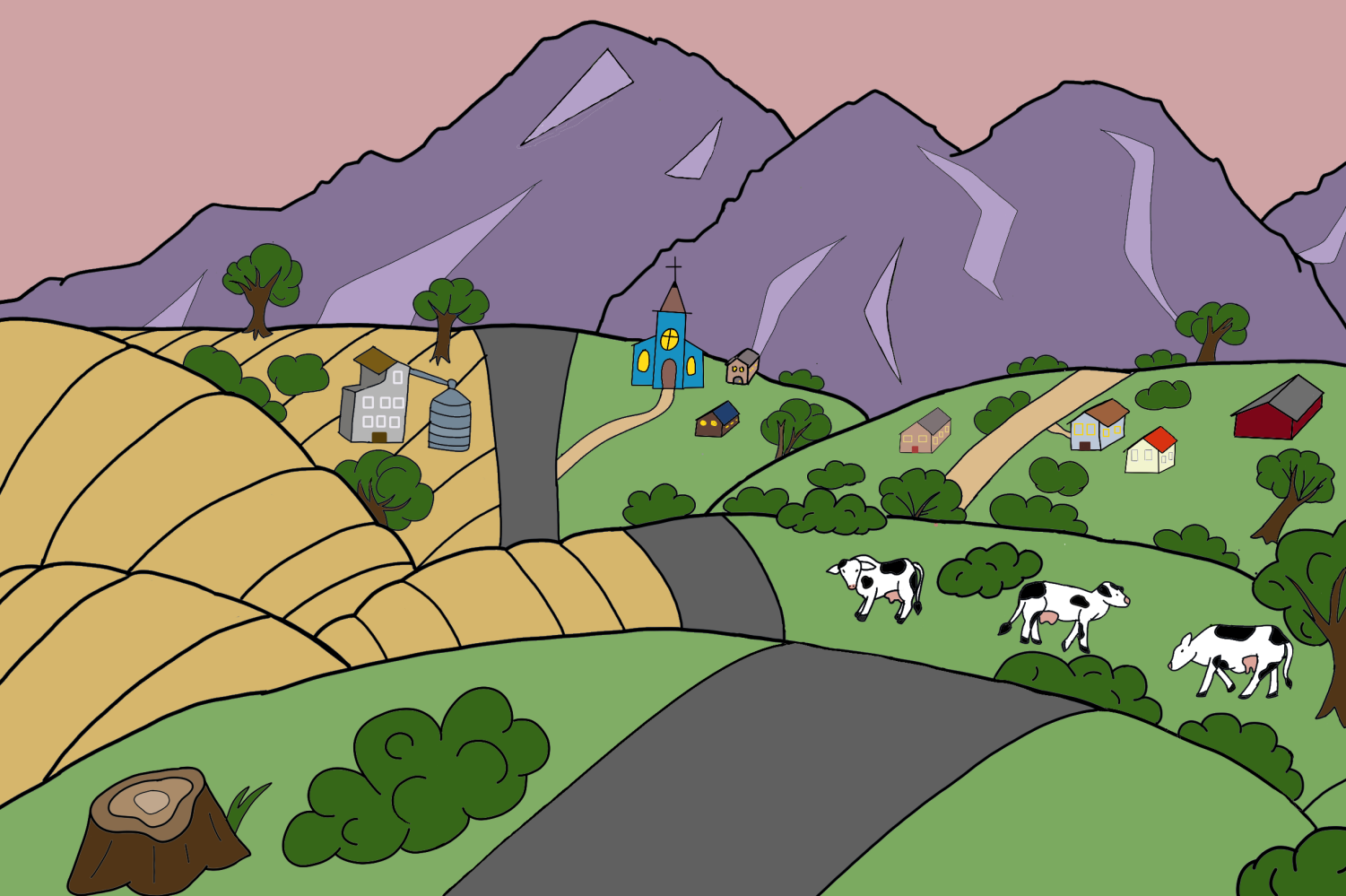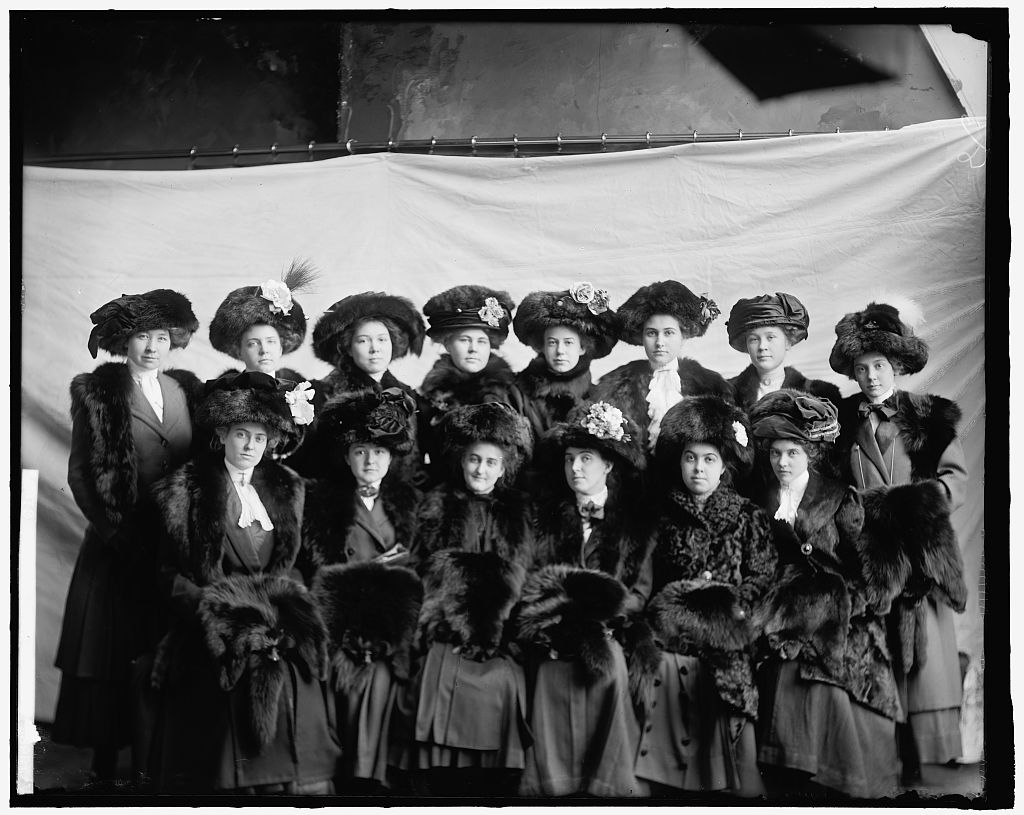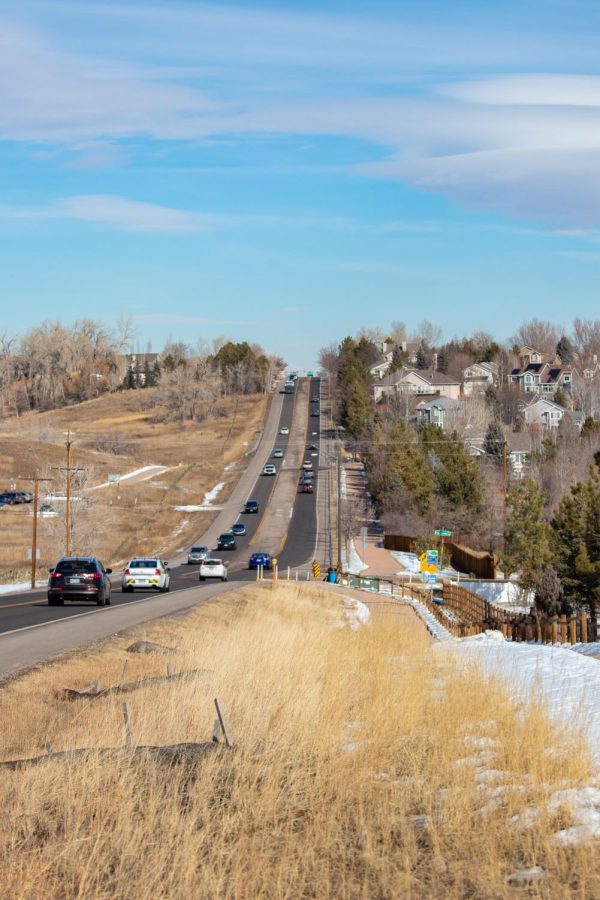Ad
Local Farms Face Challenges Brought by Urbanization
Cars drive on S Shields St between the Cathy Fromme Prairie natural area and the Fossil Creek neighborhood in Fort Collins on Wednesday, Feb. 9, 2022. (Anna von Pechmann | College Avenue Magazine)
March 2, 2022
The world grows and changes constantly, but no amount of urban growth on the environment will change the fact that food is essential to survival. However, the development that accompanies this change and growth is beginning to overthrow the agricultural opportunities and resources that are vital to natural food production. This pushes farms and ranches into more rural areas and limits the options for more sustainable, locally-sourced produce and meats.
“Over my lifetime I’ve seen a lot of our neighbors who were farmers and ranchers that had to sell their cattle and had to sell their land, and where all the agriculture used to be is [now] housing developments,” Michelle Vanhosen says, who currently works on Miller Farms. She has been immersed in agriculture her whole life and will eventually run the farm with her husband and children. Agriculture being replaced by homes has distanced food from communities in a time where the demand for local produce has increased in popularity significantly.
“Within the last five years buying locally has come back into style,” Vanhosen says. “Whereas 10-15 years ago when I was in high school doing markets you really had to push what you sold and drop the prices way below anything you could actually make a profit on in order to sell your stuff because people didn’t want to visit farmers markets.”
Now people have a higher desire to support local, and small farms such as Vanhosens are able to sell their product at an affordable and profitable price, which allows them to put money back into improving their farm.
The market for local produce may have increased, but it is becoming less accessible with growth in urban communities. The expanding population leads to growth in both housing and commercial developments. In Colorado, where the environment contains prime conditions and soil for bountiful crop production, these developments are often built over prime farming land. The Front Range of Colorado houses part of the most fertile soil in the United States.
“Our sandy soil really is the difference, it makes stuff taste better, and it keeps the nutrients in it,” Vanhosen says.
When developers build over this land, it decreases the amount of farm space available and limits natural food production. Single-construction companies are able to build fast and cover acres of land quickly.
Hartford Homes, a local Fort Collins construction company that specializes in housing developments, has built more than 4,000 homes since 1988. This is just one example of the fast mass developments that are occurring on farmland in the local area.
These fast, large-scale developments have negative effects on the agriculture around them. Extending east from the Rocky Mountains and the Front Range is luscious farm ground with rich, delectable soil and land level enough to see for miles.
Spence Rule, the manager of Wool Feeders, has been surrounded and working with agriculture his entire life. “I would say probably some of the biggest changes I’ve seen is the encroachment of the cities on prime farm ground,” Rule says.
Rule says his family had to leave Brighton, Colorado, where they were running a feedlot, because of the urbanization and inundation of homes. The increase in people and the characteristics that accompany an urban setting were not favorable to effectively running a feedlot.
“The encroachment of homes in the Brighton area basically took us out of the feedlot business there, and moved my family, my wife and kids, to Brush,” Rule says. The move left Rule’s family about 20 miles out of town working without the complaints that being surrounded by homes brings.
Land is not the only resource being consumed by homes. Rights to water are the equivalent of gold in an area like the Front Range. That fresh Rocky Mountain spring water is desired by more than just those in agriculture, and with water being an essential piece of the industry, if that resource is not accessible then agriculture is not possible.
According to Vanhosen, in about 2002 farmers lost the rights to use water wells to irrigate and water their crops, making it difficult for many farms to find water to work with.
“The more houses that go in, the more water is taken away, and so eventually it’s going to be interesting to see how it all plays out and how water is going to be able to come down the flat,” Vanhosen says.
Urbanization causes an increase in water needs and turns into another reason that an influx in people forces agriculture to move, “and water mainly has been extremely difficult on the water side of these farms and ranches that are along the Front Range,” Rule says. While running both a sheep feedlot, a dairy and producing crops while in the Brighton area, Rule had to sell his water rights.
“Westminster wanted the water, we didn’t want to sell, but they basically forced us into selling the water because they got voting rights on the ditch and decided we would either sell them the water or we would concrete the ditch over,” Rule says. They chose to sell, turning down the option to pay over a million dollars to concrete their share of the ditch.
Sharing resources is bound to get complicated when multiple aspects of human life rely on them. When it comes to land and water, the earth only has so much and it’s not something agriculture and urban living are able to share. Agriculture is moving further away from communities in order to successfully run their businesses, however this makes food less local and less sustainable at a time when people are more aware of the benefits locally sustainably sourced food brings.





































